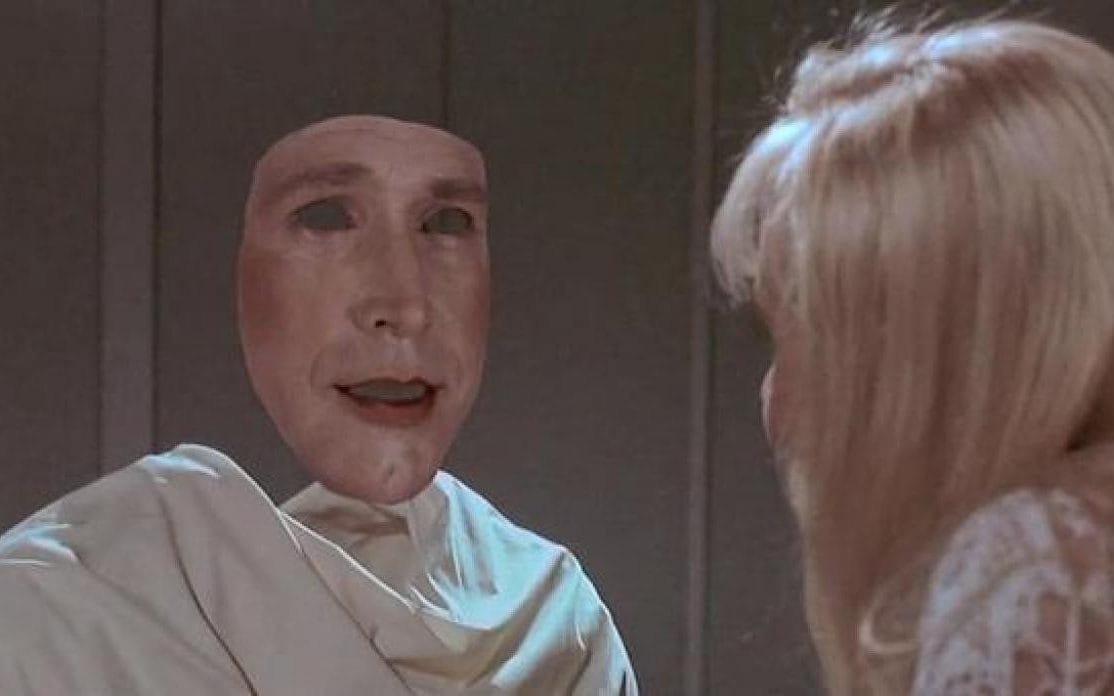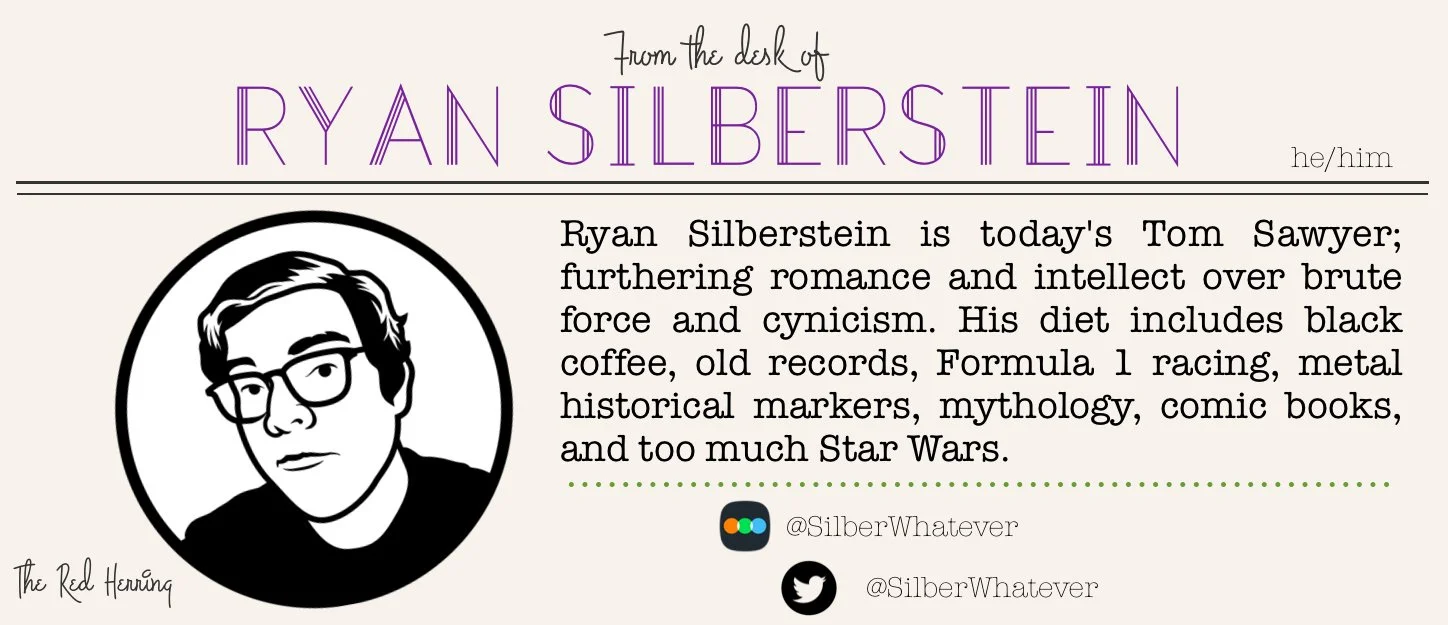How To Start Watching: Invisible Funny Assholes
by Ryan Silberstein, Managing Editor
Invisibility goes as far back as Plato, at least in western storytelling. In cinema, Sherlock Holmes Baffled is not only the first known Sherlock Holmes film but also features an invisible thief. It’s 30 seconds long and was available in arcades via Mutoscope (a rival of Edison’s Kinetoscope company). Since then, there have been tons of examples of both magic and science fiction-style invisibility in cinema. This piece will be a survey of sorts, highlighting the films most closely related to H.G. Wells’ 1897 novel The Invisible Man over the last 90 years.
If there is one thing that unites all of these invisible people is that they tend to be assholes. The best kind, as we will see, are funny assholes, using invisibility in a playful way, at least until they lose their minds. Invisibility has always been an asshole-coded power, suggesting nefarious or selfish intent rather than benefiting mankind like other superpowers or even curses. Not that all of these people were trying to become invisible, of course, but the idea of acting without consequence is a powerfully corrupting force.
The Invisible Man (dir. James Whale, 1933)
For a 90-year old movie, this one still sings. It’s amazing that this is maybe my fourth favorite of Whale’s films–after Frankenstein, The Old Dark House, and Bride of Frankenstein, not necessarily in that order–and it is one of my favorite horror movies ever. I’ve become more and more captivated by Whale’s work in the last 10 years, and there’s something about his approach to horror, while mixing in melodrama and comedy, that always resonates with me. And there are so many reasons why this movie still works. Aside from Dracula, Dr. Jack Griffin (Claude Rains) is the only one of the Universal Monsters who is actually a villain. Frankenstein’s Creature, The Mummy, the Wolf-Man, and Gill-Man are all victims in one way or another, but Griffin has an even higher body count than the Count. In this film, he throws two innocent people off a cliff, kills a man by sending a car over a cliff, and causes a train derailment that kills a hundred people. The Invisible Man makes a great case for the damage one invisible person can cause, both in the level of destruction and in the deranged energy that Claude Rains brings to the role.
This was Rains’ first film role, and despite being invisible for all of the movie, his presence feels massive. His dialogue is mocking and smug, and you believe the contempt he feels for his fellow man from the very first scenes of the film. He’s a pompous jerk, and the rest of us are fools because we do not have science at our command, and thus must live by the rules society imposes on us. Watching The Invisible Man is a little like having your cake and eating it too. Whale smartly allows Rains to go all out but still shows the movie from his perspective. We see the ideas that the cops have for catching Griffin and how ineffectual they are, allowing us to laugh with him. All of this allows us to indulge in the anarchy he causes while also being horrified about it at the end. This is one of the cathartic aspects of horror: we can identify with the killers and the victims and engage with power and powerlessness in the same story.
With Whale being an openly gay man (rare for that time period), I often wonder if Whale saw aspects of his life in Griffin. Homosexuality was often referred to as a form of madness or mental disorder, but Whale could also pass–a form of invisibility. I highly recommend the biopic Gods and Monsters for more insight into Whale’s life, and I hope to get to this book about him sooner rather than later.
Invisible Agent (dir. Edwin L. Marin, 1942)
This one has a great premise: Griffin’s grandson (Jon Hall) runs a print shop in Manhattan and is approached by Axis powers agents–including Peter Lorre in unfortunate yellowface–demanding he give them his grandfather’s invisibility formula. He escapes and, to his credit, refuses to share it with the U.S. until after Pearl Harbor. Even then, he insists that it is only used on him. He parachutes behind enemy lines, disappearing before the eyes of the Germans who are observing him. What follows is a largely farcical and sometimes sloppily-plotted propaganda comedy. I found it quite enjoyable, but that is probably because I am typically in the bag for World War II stories. There’s a much better movie to be made from this setup, but it is pleasing to see a funny asshole make Nazis look extra foolish.
The Vanishing Private (dir. Jack King, 1942)
Released a few months after Invisible Agent, The Vanishing Private also uses invisibility as a potential wartime boon. I recently watched this Donald Duck short for my Disney history podcast, Dream With Mind and Heart, when we discussed Victory Through Air Power and felt it worthy of inclusion on the basis of quality. While not as highly regarded as some of the most famous examples of wartime propaganda, The Vanishing Private has great use of invisibility for pure comedy, and I would argue that Donald Duck is maybe be the most lovable funny asshole in film history (sorry Bugs and Daffy). Here, after finding some “experimental camouflage paint,” Private Donald turns invisible and immediately uses it to prank his sergeant, Pete, to the point where his commander ends up in a straightjacket at the end of the film.
The Invisible Man vs The Human Fly (dir. Mitsuo Murayama, 1957)
Japanese studio Daiei Film made The Invisible Man Appears in 1949 and followed it up with The Invisible Man vs. The Human Fly almost a decade later. I definitely recommend both films–which have been packaged together on Blu-Ray by Arrow Films for their first release outside of their home country–but The Invisible Man vs The Human Fly feels like a more unique take on the “turn invisible, do crimes” formula. While both combine elements of procedural, science fiction, and spy thriller, the Human Fly opponent of the latter film makes it feel even more like a genuine monster mashup as the Invisible Man faces off on a man shrunken down to the size of an insect for the purpose of committing murders. There’s a joyfulness in the ridiculous nature of the case, and both are perfect weekend morning watches. While the effects are not as good as Appears, I had a blast watching this one and look forward to revisiting both soon.
Memoirs of an Invisible Man (dir. John Carpenter, 1992)
This is maybe the actual weirdest movie on this list. While originally pitched by funny asshole Chevy Chase as a more serious noir-minded flick, he can’t help but Chevy Chase his way through every scene of this movie. So while the noir elements are certainly present, they are completely unbalanced by Chase’s performance. There’s a lot of great stuff here, including some top tier effects work (this is like peak optical effects era right before the computers started to really take over). There’s a sequence with a partially invisible building that is astonishingly good. I think Memoirs of an Invisible Man is better than its awful reputation, but it suffers greatly from trying to be two movies at once and not being successful at either. And even worse, the romantic plot feels so much like a Clark Griswold daydream that I was shocked when it wasn’t one.
Hollow Man (dir. Paul Verhoeven, 2000)
This list so far has eschewed the more pervy possibilities of invisibility, but don’t worry: Paul Verhoeven is going to do his best to make up for it. The only movie in the director’s oeuvre I would actually deign to call a trashterpiece, the trailers for this were burned into my brain long before I actually saw it. Like the funny assholes before him, Kevin Bacon’s Dr. Sebastian Caine is a narcissistic jerkoff making rape jokes before he turns himself invisible, and once he does, all sense of ethics go out the window. This is reinforced by several sequences Verhoeven depicts from Sebastian’s point of view, putting us in the place of the voyeur/assaulter. He goes from “naughty misogynist” to “creepy voyeur” to “rapist” as the film progresses, aligning the madness caused by the formula in Wells’ version to the degradation of morals all around. For Verhoeven, that impulse was always present. Definitely be warned for the depictions of assault here, but Verhoeven is really indulging in a core aspect of H.G. Wells’ original idea: how will we behave if we don’t need to be concerned about being held accountable?
The Invisible Man (dir. Leigh Whannell, 2020)
While this film does place its antagonist in the Griffin lineage, this Invisible Man isn’t funny, he’s just an asshole. Leigh Whennel reinterpreting The Invisible Man as a lens to show gaslighting and abuse is both clever and effective. And not just because invisibility is a useful tool for accomplishing this kind of abuse. While there is a literal invisible man in the story, his twisting of reality isolates Cecilia (Elizabeth Moss) and makes her suffering invisible even to her closest friends and family. But what I love most about this movie is that it is effectively scary as a straightforward horror movie and as a psychological thriller. A lot of the film rests on Elizabeth Moss’ performance, and The Invisible Man easily stands alongside Shirley and Her Smell as one of her finest. Without the multifaceted nature of her performance, none of this movie would work. But if they ever bring back the Dark Universe, please ask Moss to lead it.








